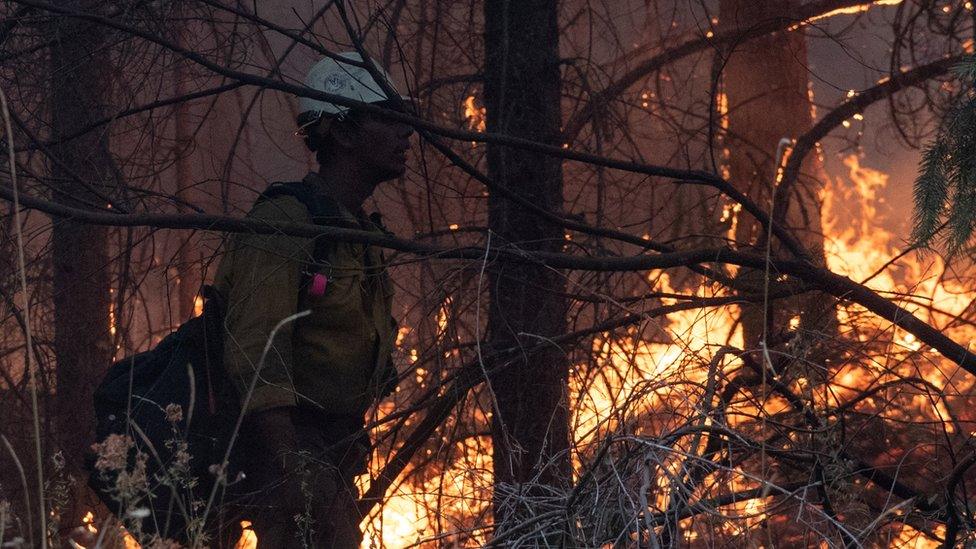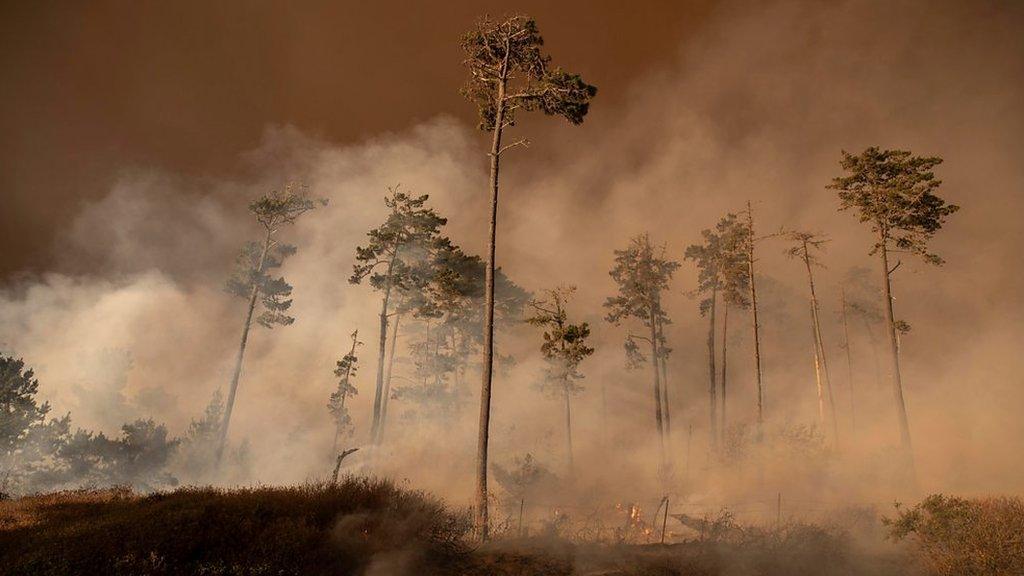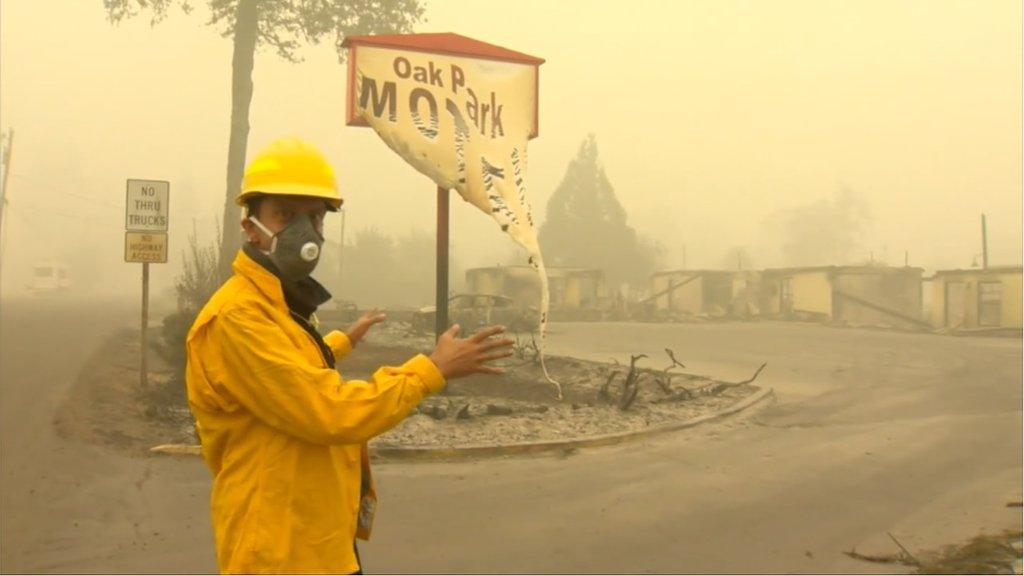US West Coast fires: Smoke spreads to New York and Washington
- Published
US wildfires: What are health risks of smoke pollution?
Smoke from the wildfires ravaging much of the US West Coast has spread to the east of the country, casting a haze over New York and Washington DC.
The blazes have burned vast areas of land and killed at least 36 people since early August.
They have also caused some of the most unhealthy air on the planet in several western states.
Scientists said the smoke on the East Coast was so high that it would not impact air quality.
Satellite images showed the smoke being carried to the East Coast by the jet stream - a narrow zone of high-speed winds - across the Mid-Atlantic.
The National Weather Service (NWS) in New York said smoke passing over the state was 25,000ft (7,620m) high on Tuesday.
"If you looked up to the sky today, you may have seen a yellow or brown tinge. You were seeing smoke from the fires", the NWS said on Twitter.
Allow X content?
This article contains content provided by X. We ask for your permission before anything is loaded, as they may be using cookies and other technologies. You may want to read X’s cookie policy, external and privacy policy, external before accepting. To view this content choose ‘accept and continue’.

There were also hazy skies in the capital, Washington DC, where the NWS said smoke was about 15,000-25,000ft about ground level.
The smoke was obscuring the sun on Tuesday and meant temperatures were slightly cooler in the city than they otherwise would have been, it added.
Journalist Mike Valerio shared a picture of hazy skies around the Lincoln Memorial.
Allow X content?
This article contains content provided by X. We ask for your permission before anything is loaded, as they may be using cookies and other technologies. You may want to read X’s cookie policy, external and privacy policy, external before accepting. To view this content choose ‘accept and continue’.

What is happening on the West Coast?
Dozens of wildfires have burned across vast swathes of land on the West Coast since the start of August. Strong winds and low humidity have been hampering efforts to keep the blazes under control.
The states of Oregon, Washington and California are experiencing some of the most unhealthy air on the planet, according to global air quality rankings.

Wildfires have been sweeping through the state of Oregon
The poor air quality has forced some businesses to close, grounded flights and suspended services like rubbish collection in some communities.
"Everything is covered in ashes," California resident Twana James told the Associated Press news agency. "It's hard to breathe."
In some parts of Oregon, air quality has been so hazardous that it has gone beyond the scale of the state's Air Quality Index.
The smoke has also drifted north to Canada, where an air-quality warning has been issued in Vancouver for eight days in a row.


Oregon Congressman Peter DeFazio said the White House on Tuesday approved a request from the state's governor to declare a "major disaster" because of the fires.
The decision would make more federal aid available to the state and "provide resources needed for our communities to rebuild", he said.
In Los Angeles, firefighters have been battling to protect the famous Mount Wilson Observatory - founded in 1904 - as a wildfire nears.
Allow X content?
This article contains content provided by X. We ask for your permission before anything is loaded, as they may be using cookies and other technologies. You may want to read X’s cookie policy, external and privacy policy, external before accepting. To view this content choose ‘accept and continue’.

US President Donald Trump has blamed poor forest management for the fires.
California Governor Gavin Newsom this week said the deadly wildfires showed that the debate around climate change is "over".
But on a visit to the state, Mr Trump dismissed concerns about climate change, saying "it'll start getting cooler, you just watch".

THE DAY CALIFORNIA BURNED: A chilling documentary on the deadliest fire in America for a century (Only available in the UK)

- Published15 September 2020

- Published15 September 2020

- Published15 September 2020
